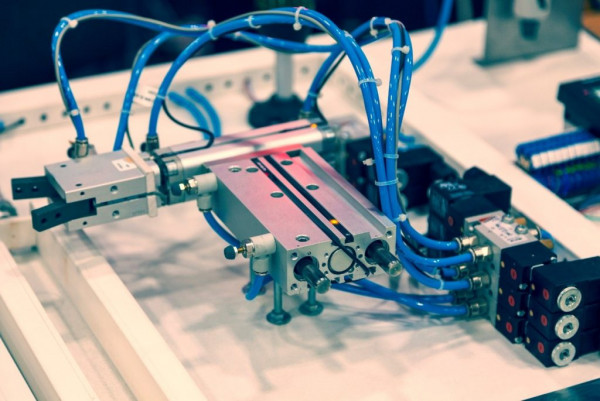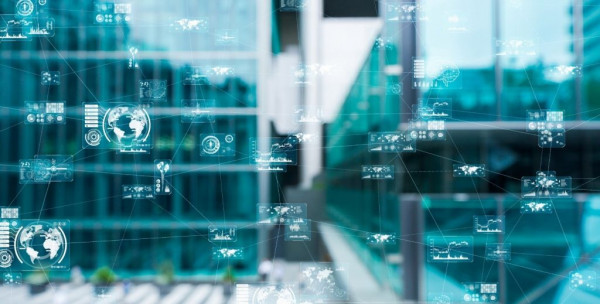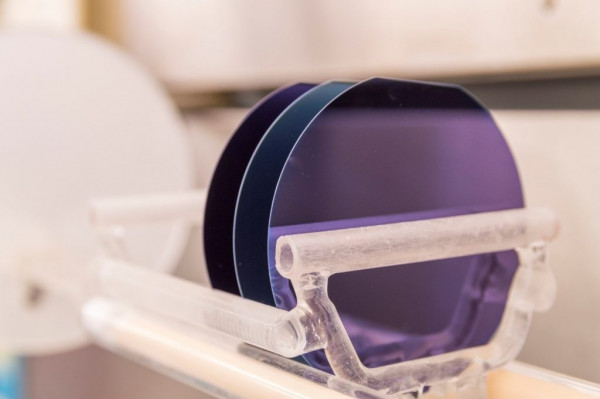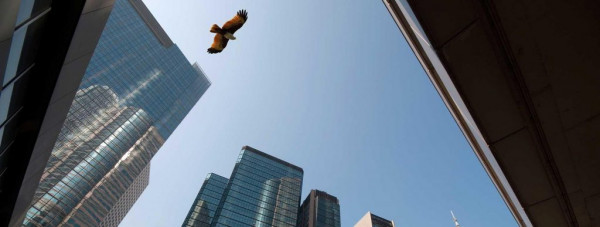Posted: 4 years ago
Technology In Glass
Although glass has ancient origins, its high-tech future is becoming more limitless every year. The future of glass is constantly evolving by incorporating new technologies that expand the combinations of new materials and fuel unprecedented application techniques. From tools to software, technology is the driving force behind the future possibilities of glass and its use in architectural design.
At Goldray, we are constantly challenging ourselves to push the boundaries of glass and we are excited to share the technology developments that we anticipate to become industry norms sooner than later.
3D Printing

Until now, glass has been untouchable in the world of 3D printing technology. For the first time in history, researchers have been able to successfully 3D print a design that is made of chalcogenide glass. By successfully 3D printing chalcogenide, it paves the way for manufacturers to begin experimenting with more complex glass components and designs on a 3D printer.
Specifically, 3D printing would be revolutionary for making fiber preforms – where pieces of glass are pulled into a fiber – utilizing the combination of multiple materials, or recycled components and then creating intricate geometries. Once the 3D printing of glass is perfected, it will open the potential for several types of glass to be precisely produced in high volume quantities – which will ultimately drive the glass industry towards less expensive manufacturing and greater production possibilities as facades continue to become more revolutionary.
Artificial Intelligence (AI)

Artificial intelligence is often envisioned as a robot or an advanced processor that can understand code and made decisions from patterns in information – but what about a sheet of glass?
Researchers from the University of Wisconsin-Madison have discovered a way to insert neural computing capabilities into a single sheet of glass. By using light patterns to establish images – instead of a traditional computer or power source – glass sheets can now be built with image recognition capabilities that match the speed of light.
While the thought of installing a form of AI into an object like glass may seem as advanced now, research published in Photonics Research indicates that this is just the beginning of the discovery’s capabilities. The researcher’s demonstration proved that their discovery is also capable of number recognition and may be the breakthrough that was needed for artificial vision.
Data Storage

It’s a bird…. it’s a plane…. it’s Project Silica?
In November 2019, Microsoft officially created Project Silica – a cold storage concept that was designed for preserving and storing data within glass. Using regular quartz glass, Microsoft and Warner Bros. collaborated to successfully store the classic 1978 “Superman” film on a piece of glass that is comparable to the size of a drink coaster.
By using a laser to encode data into the glass and establish several 3D deformations, machines are then able to read the data back by decoding the images and patterns that are created by shining a polarized light through the glass.
The glass-based storage technology was created after years of searching for technology that could withstand the test of time, handle substantial floods or heat, and not require constant refreshing.
As long-term storage costs – such as the cloud – become increasingly expensive due to the need to constantly transfer data onto newer media, glass storage has the potential to become the industry leader in low-cost data storage. In addition to reduced costs, quartz glass doesn’t require a constant energy source or air conditioning for temperature consistency – which gives glass storage the potential to significantly decrease the significant environmental footprint that is created by large-scale data storage operations.
Bird-Friendly Glass

At Goldray, we believe that technology advancements should strive to improve all lives that exist on our planet. While many technology breakthroughs improve the lives and safety of humans, we are always mindful of the impacts that design and architecture have on animals and the natural environment.
In traditional design, it is estimated the up to 1 billion birds are killed each year due to collisions with glass facades on buildings. By creating “visual noise” in our Bird-Friendly Glass, we are able to reduce the glare that is produced by rays off the glass, and contribute to the creation of more conscious structures that have been proven to reduce bird fatalities.
By using new manufacturing technologies, we are able to fuse our ceramic paint directly onto the glass, creating a long-lasting and abrasion-resistant façade that has been proven to reduce bird fatalities by up to 90%. Available in a wide array of colors and patterns, our Bird-Friendly Glass has the highest standard of chemical, UV, and weather-resistant properties that ensure its ability to withstand environmental stress and other elements that exist in exterior applications.
We would love to hear from you!
Which glass technology has you most excited about the future of glass? Share this blog on your social media and be sure to tag us to let us know!


































